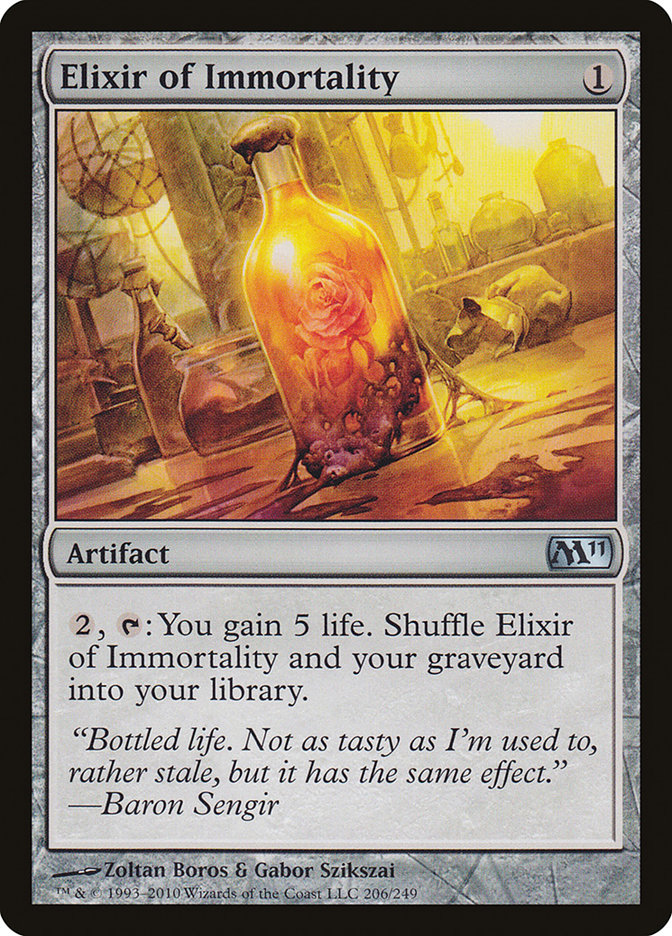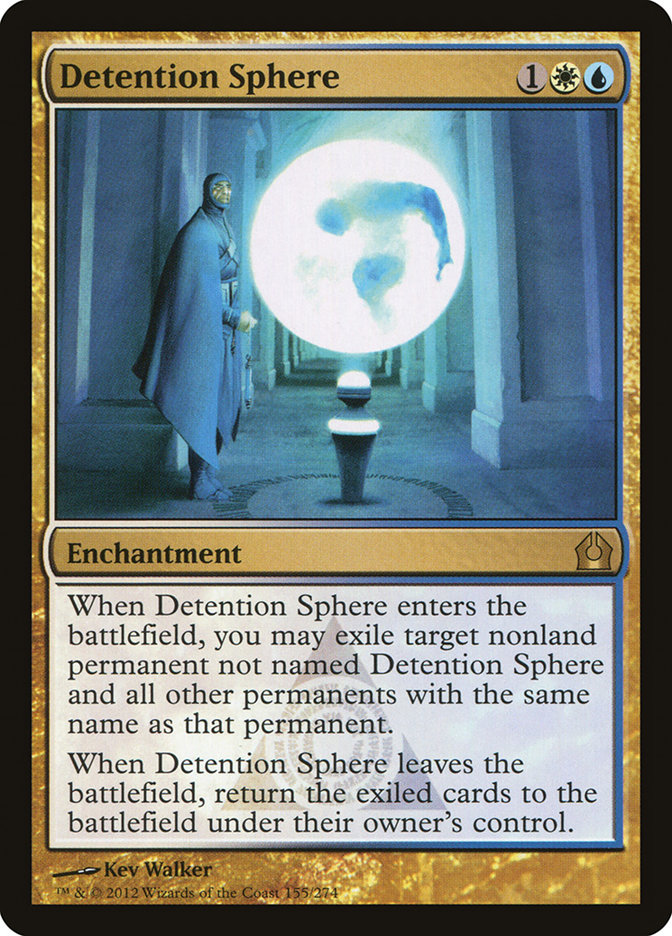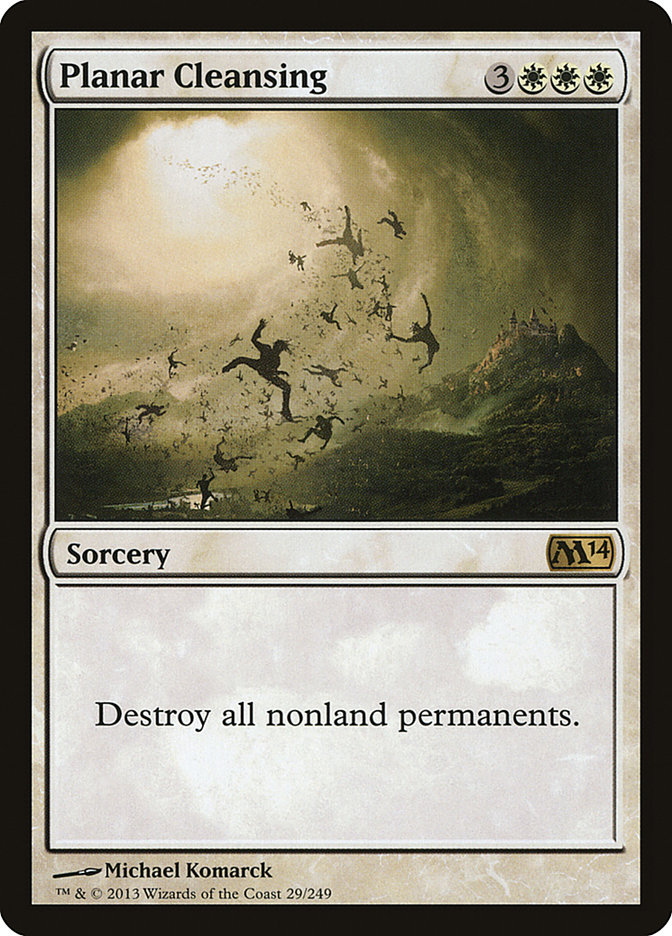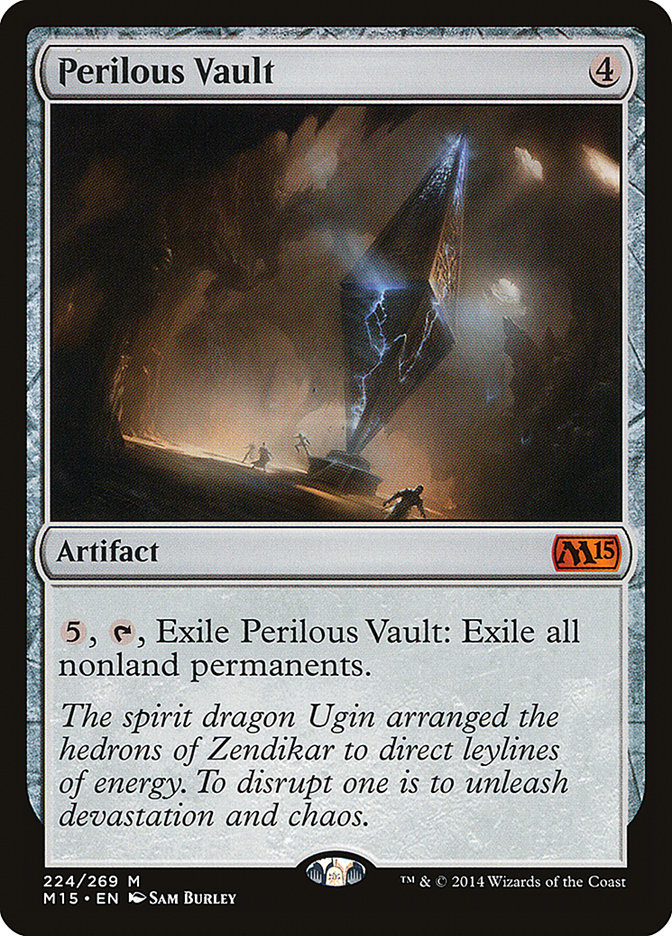This time of year is always an interesting one. For most people, it is a time of reflection as well as a time to look towards the future. As I write this,
the clock has not yet struck midnight, so it is still 2014, but 2015 will be here soon enough.
Last year at this time, I was recovering from having my wisdom
teeth removed. It was pretty amazing to me just how much this knocked me out of commission. Last year at this time, I was trying to find a path back to the
Pro Tour after a long absence. This year, I’ve gotten that taste again, and hope to make the Pro Tour a regular part of my competitive Magic life.
If you follow my online presence, you may already have a pretty good idea of what my
Magical life has been for the last year. Magically speaking, it almost feels like Chris VanMeter is right and 2015 will be the Year of the
Dragon (even if technically that was 2012), but for now, I’m going to talk about 2014 and wait to speculate about 2015 until we see all of Fate
Reforged.
January
The year started out by broadcasting a significant turn for me in the nature of Constructed decks I’d be playing for a while. I began the year with one of
many close calls at a tournament win with U/W Control, a deck that I’d end up championing for much of the year.
Creatures (1)
Planeswalkers (5)
Lands (26)
Spells (28)

I fell in the finals of this Madison, Wisconsin PTQ (a real honest-to-goodness PTQ!) to
Andrew Beckstrom, playing Mono-Blue Devotion, a matchup that I hadn’t fully solved yet. Andrew’s strategy was horrifyingly difficult for me to handle after
board: he would add in ten counterspells and up his Jace, Architect of Thought/Bident of Thassa count to six. This would create a very difficult position
for the U/W Control deck, since it could be easy to fall behind the other deck and then simply get flipped into the position of being behind the other
deck’s control cards while slowly dying.
I almost won this one, but a timely Cyclonic Rift ended it for me. I’d already gotten to know Andrew pretty well by this point, and it was exciting for
such a great guy to win the event, as much as I wanted it.
I know that one of the legacies of this event, for me, was understanding the potential of the Mono-Blue Devotion deck to be able to turn its strategy into
a hybrid control deck – the slower of the
mixed strategies that you’d sometimes see from decks like Faeries or Vintage Oath. While Mono-Blue Devotion was a deck that would employ
advantages on tempo in game 1, the fact that it could radically shift strategic archetypes from essentially
an aggro deck into hybrid-control was a bit shocking. Not everyone would try to employ such a radical change as Andrew, but his approach (not to mention
the skill with which he employed it) really shifted the way I thought about what might come at me from the deck after sideboarding, and that knowledge
translated into a near 100% win record in sanctioned events against this deck going forward; Andrew’s friend and teammate Greg managed to take me out.
Twice. But nearly every other meetup with this archetype resulted in an overwhelming win for me.
Thanks, Andrew.
February
I continued to march on with U/W Control, taking 9th at SCG Nashville, and another player taking my deck near the top at SCG St. Louis (I finished in the
Top 32). It’s always gratifying when another player plays your deck to success, and I felt like I was right in the sweet spot with the deck.
Travelling to Nashville was awesome. I have friends that live down there, and it was just awesome being able to go out on the town in such a cool city with
local hosts who were fun to spend time with. I’d traveled a lot for Magic before this, but this trip was just so fun, I think I found myself thinking that
I needed to just do more of it.
A part of what made it so great, actually, was going down there alone and being able to do whatever I wanted with my local friends there rather than being
dependent on the whims and finishes of other people that I’d share a car with. Between that independence and the pleasure I was getting listening to Marc Maron’s WTF podcast, the trip was awesome. I basically feel like this was the moment I committed to nearly
always traveling alone to far-off events.
March
One of the things I tend to do when a deck is good is just play it into the ground. So was the case with U/W Control. I’d finish Top 8 of a PTQ, Top 8 of a
$5K in Chicago, and Top 64 of Grand Prix Cincinnati, all with very minor variations from this version:
Creatures (1)
Planeswalkers (5)
Lands (26)
Spells (28)

Aside from working on U/W Control, I was still working on
R/W Aggro, and I still very much loved the deck. It just so happened that I loved U/W Control much, much more. Despite that, I gave the deck to a
few friends, and some of them won some money at a few $5K, $1K, and other minor events.
Creatures (23)
- 4 Chandra's Phoenix
- 4 Ash Zealot
- 4 Rakdos Cackler
- 4 Boros Reckoner
- 1 Tajic, Blade of the Legion
- 4 Stormbreath Dragon
- 2 Firedrinker Satyr
Planeswalkers (2)
Lands (25)
Spells (10)
Sideboard

There are a lot of ways that the approach of this deck reminds me of BBD’s Wreck ‘Em Red list, from a philosophy standpoint. This kind of midrange-aggro
deck has always been dear to my heart, probably ever since Brian Kowal developed Ponza as an archetype. At Cincinnati, I brought the deck with me just in
case I felt the desire to audible, but in a way that was a bit silly; who can abandon their loves?
April
By this point, I was certainly getting a lot of note for my build of U/W Control, but people certainly had their issues with it. A common one was a dislike
of the many one-ofs in the deck. From my perspective, this was not only fun, but also correct. I still feel that way in retrospect.
I got another Top 8 with U/W Control at SCG Milwaukee, but another thing that really was exciting for me during that event was seeing Mason Lange’s Stompy
deck. If you missed it, here is a deck tech:
His deck inspired me to build my own version. In the coming months, I’d have a few friends have some minor success with the deck, but nothing huge.
Creatures (34)
- 1 Scavenging Ooze
- 4 Brushstrider
- 4 Burning-Tree Emissary
- 4 Experiment One
- 3 Slaughterhorn
- 4 Elvish Mystic
- 4 Kalonian Tusker
- 4 Reverent Hunter
- 1 Nylea, God of the Hunt
- 4 Boon Satyr
- 1 Mistcutter Hydra
Lands (23)
Spells (3)

One of the things that I think is incredibly important for anyone that is “stuck” on a deck is to keep looking at other decks, particularly as new sets
come out and change the Magic world. I am a huge proponent of finding a good deck and sticking with it, but if you employ this methodology, you still need
to keep your eyes open to new things, lest you miss the opportunity to play something wildly powerful.
If you’re a deckbuilder, I also think it is important to try to build many different kinds of decks. It is just a useful exercise to keep your
brain sharp. If you do it long enough, you’ll start to find that you get better at understanding how to create counter-strategies to those decks you are
most likely to build, simply because you have become used to thinking about things from the perspective of the other deck.
May
This was a cool month for a lot of reasons. One of the big ones is that I moderated my first panel discussion at a Grand Prix for Steve Port and Legion
Events.
We called it PlanesTalkers. By the end of the year, I would end up having two more scheduled, though I had to cancel one because of conflicts.
All told, it was a great experience, and I learned a lot. There are some technical problems with this video, but it was still a great discussion.
At that same Grand Prix, I struggled to figure out what to play, and ultimately ended up playing a wildly rogue deck (Grixis Delver), which was
fundamentally sound but had some weaknesses. I decided that one weak matchup, Affinity, was too hard to win, so I took out some of my anti-artifact cards
out of a desire to strengthen other matchups. Four of my first five matchups were against Affinity, and I only beat it once. Yikes.
In the Super Sunday Series side event, I decided to try out my take on Naya Midrange. I missed the Top 8 just barely, but spent the whole day wishing I was
playing U/W Control. It wasn’t that my Naya deck wasn’t also great, but I just felt like I was selling myself short not playing what was still clearly my
best deck. My foray away from U/W Control was inspired by the horrible experience I had just had in my previous event.
Earlier in the month, I’d played that deck, U/W Control, at SCG Cincinnati. The deck felt great, and someone else playing my deck got Top 8 with it.
At the same time, I also felt like there was something wrong. This was incredibly clear when a pair of matches against Black Devotion swung the wrong way
for me. I remember the one match ending in devastating fashion like this:
End of the turn, they Abrupt Decay my Detention Sphere, freeing up Vraska the Unseen. They untap and use Vraska to destroy another Detention Sphere,
freeing Erebos, God of the Dead.
Yikes!
It didn’t take me very long to crumble after this horrifying set of plays. Especially with Andrew Tenjum winning the event, I knew that this green splash
in Black Devotion was going to become the norm, or at least an incredibly popular variant. It was time to think about saying goodbye to an old friend, and
make the acquaintance of a new one:
I had already been considering builds of the deck with Planar Cleansing, but that was the last straw. My ancient prediction (as of M10) to Gaudenis
Vidugiris had finally come true: Planar Cleansing was the real deal. Now I just had to decide whether or not to pull the trigger.
June
This was a mixed month. Here is why:
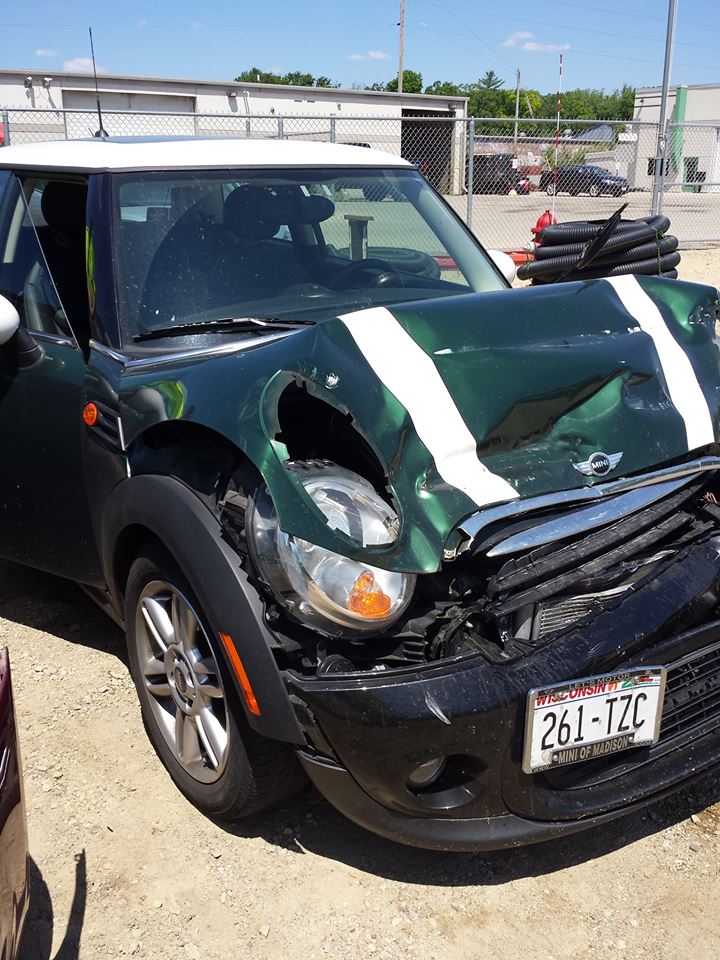
As I would say on Facebook, “I’ve had better days…”. Five
minutes into my drive to a double-PTQ weekend, I ended up in a car accident that didn’t injure anything other than my pride and my pocketbook. It was
pretty scary.
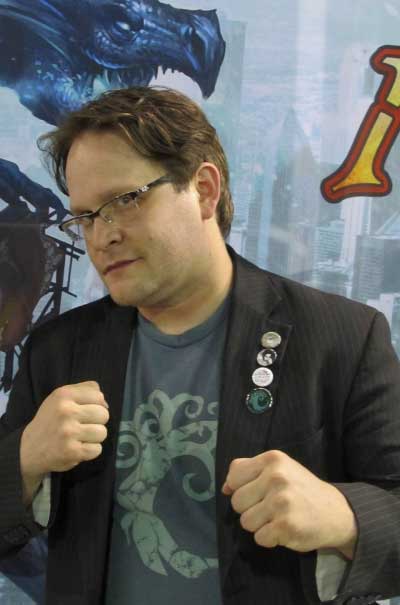
On the other hand, two weeks later I
qualified for the Pro Tour again by finishing in the Top 8 of the Grand Prix in Chicago. With my U/W Control deck, of course.
Damn it felt good.
Here is that list:
Creatures (1)
Planeswalkers (5)
Lands (26)
Spells (28)

I still absolutely love this list. Jadine Klomparens would defeat me in the semis, but I actually feel like I was incredibly close to just winning the
whole thing. What a great event!
In addition, I hosted my second PlanesTalkers. It was a great conversation and another great part of the weekend.
July
Newly qualified for the Pro Tour, without PTQs to go to, and without a car, I basically took this month off from Magic other than drafting as much M15 as I
could. On the seventh month, he rested…
August
August was the return to doing commentary. I was brought in to do commentary for the WMCQ in Indianapolis by Rashad Miller, the man who got me started on
commentary back in 2010. Joining us were Ray Punzalan and Brian Kowal.
It was truly awesome being back in the booth, and I had a great time. When my friend Andrew Beckstrom won it all, it just felt like a perfect cap to the
weekend. That man has been on a tear!
And, of course, I started making a new friend:
September
Prep, prep, prep. That’s what this month was all about.
The Pro Tour was the second weekend of October, and I wanted to be ready. Draft. Constructed. Rinse. Repeat.
Ashiok was high on my radar at this point. The card was one that I had absolutely loathed in the previous Standard. It just felt like it so rarely managed
to accomplish what it needed to accomplish, and I basically felt like it was dead weight.
In preparation for Pro Tour Theros the year before, Adam Jansen had had a U/B Control deck that I really liked that had Ashiok in it, and I recognized that
the card had potential, but it just felt like it was under the bar of the moment. Frankly, all of the best decks were just able to do too much to an
Ashiok, and besides that, the card draw spells felt underwhelming.
Perilous Vault solved one of the problems that the deck had had (his deck was pre-M15), and Dig Through Time solved the other.
Pretty quickly, I had gotten the deck to a point where it seemed formidable. One of the things that started to impress me was that Ashiok, Nightmare Weaver
was actually doing good work where before it hadn’t. I think a big part of why is that the most common direct answers to it had disappeared with the
rotation, and the format had just wildly slowed down. In a Courser of Kruphix world, Ashiok is just incredible.
By the time the month was out, I’d already decided on my deck for the Pro Tour.
October
Pro Tour Khans of Tarkir. Back. Yes.
I didn’t do as well as I wanted. I went 10-6 instead of 11-5 and so I
missed the invite to the next event. Damn it.
Here was my deck:
Planeswalkers (5)
Lands (26)
Spells (29)

There was, however, a lot to feel good about. According to
Chapin, U/B Control was the top performing deck of the Pro Tour. In addition, despite the flaws that I think exist in the deck that I played,
from a fundamental perspective, I think that I also had the best approach to U/B Control of any of the decks at the Pro Tour.
I go into the problems with my version of the deck in my article Revising U/B Control. At heart, the big problem was that in the
preparation for the event, I simply didn’t finish the deck. At the beach house, our team was doing a ton of preparation, and I spent too much time helping
everyone with their decks and not quite enough time finishing my own deck. My sideboard is a great example of this, where I simply had too many matchups
where I had too many cards to board in, and others where I didn’t have enough. Honing those last few cards takes time, and I’d failed to create a coherent
75-card list, instead creating a 60-card list and a 15-card sideboard, without truly finishing things so that I had coherent post-board lists for every
matchup I expected.
It was a good lesson, and one I won’t forget.
November
In November, I teamed with Madisonians Ben Rasmussen and Aaron Lewis for the Team Grand Prix in Nashville. We had a lot of fun, but ultimately, we didn’t
do nearly as well as I would have liked. Fortunately, my friend Matt Severa managed to get into the elimination rounds with two guys.
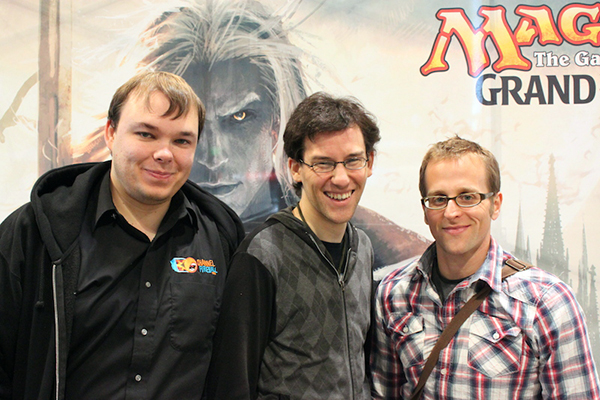
On the other side of the room, I ended up making the Top 8 of the Super Sunday Series event with U/B Control. The rest of the top 8 included Charles Gindy,
Tom Ross, Nathan Holiday, and Alex Sittner. Yikes!
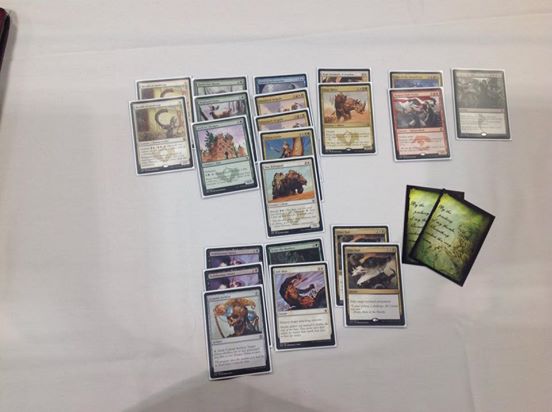
My apologies to Sol Malka and everyone else for not recording my manabase; it worked out great – I was just agog at how insane my deck was, I neglected to
take the picture with them in it.
I won it, which means late in January, I’ll be in Seattle at the second Super Sunday Series! I can’t tell you how pumped I am for that.
In addition to that finish, I managed a second place at an SCG Super IQ with U/B Control. I’ll take some icing on the cake!
December
It’s been a pretty quiet Magic month for me. I’ve played in two Preliminary PTQs and finished in the Top 8 of both, being Crater’s Claws’ed out of one in
the first round of the draft, and losing in the semis to car-mate Caleb Durward in a match that revolved around whether or not I would topdeck a land in
Game 3.
These preliminary PTQs have been very interesting actually. I’ve only been to two of them so far, but it really felt as though the top players in the room
truly did dominate. In the most recent one, just this last weekend, I think the Top 4 players in the room were actually in the Top 4 of the event. In the
one I played at a few weeks ago, the six best players in the room were in the Top 8.
In events this small, I think this is a very good thing, especially as store owners get better at becoming tournament organizers. I wrote in a bit more detail about these “Pre-TQs” a few weeks
ago. Overall, I think that they are cool little events, even if I have mixed feelings about what they mean for people trying to qualify for the
Pro Tour.
I’m not currently qualified for the Pro Tour, but I’m working on it, and I’m hopeful. I’m helping out Matt Severa and the Madison crew for an all-Madison
Pro Tour. Hopefully you’ll see several of us in the Top 8 of the next one!
Last year, I noted I hadn’t played in nearly as many events as I’d wanted to. This year, I feel like I grew a lot as a player, and a large part of that is
from going to as many events as I did. 2014 was definitely the year of Dissolve and Divination for me. I’ve definitely been loving being in the control
role, but I have to say that I’m hoping that 2015 might include a little bit of beating down.
Maybe Flamerush Rider will end up saving me? (Or maybe I’ll just be a slave to Ugin…)
What about you? How was your Magical 2014? What are you hoping for in 2015?

